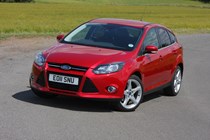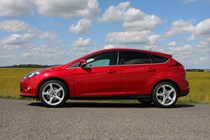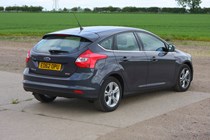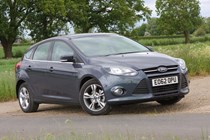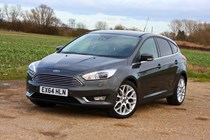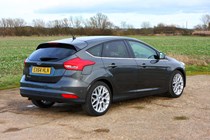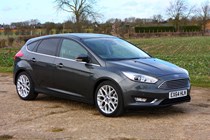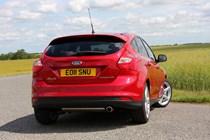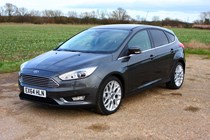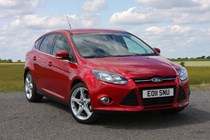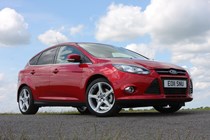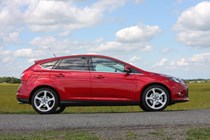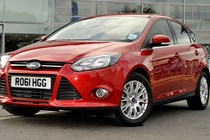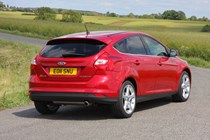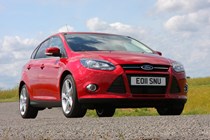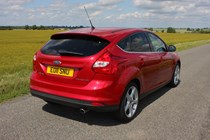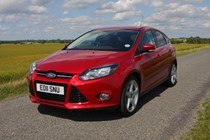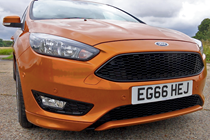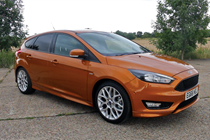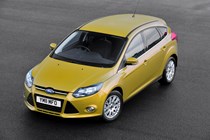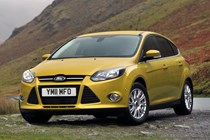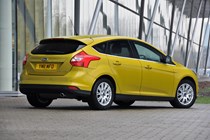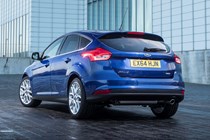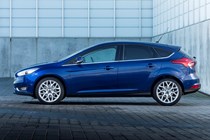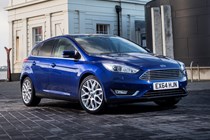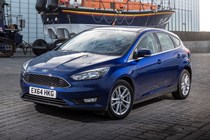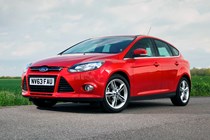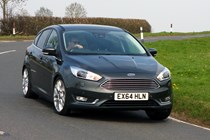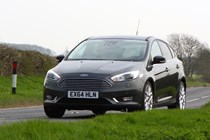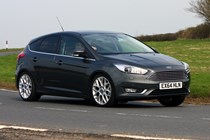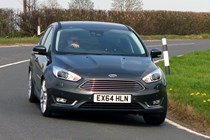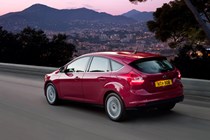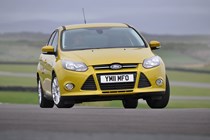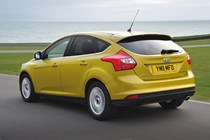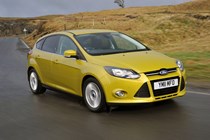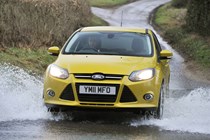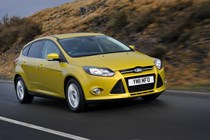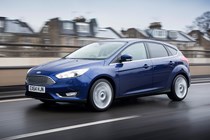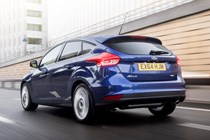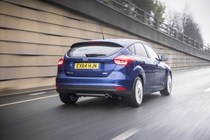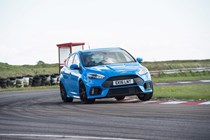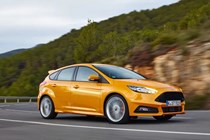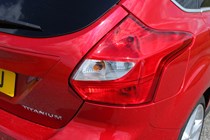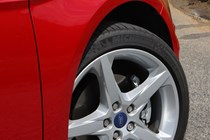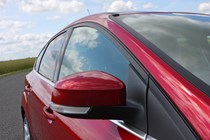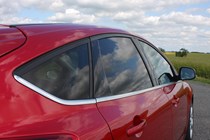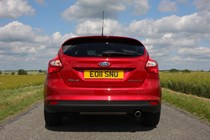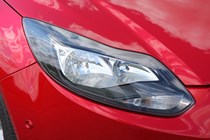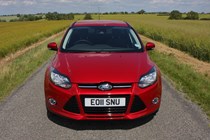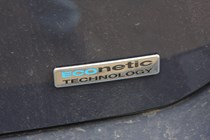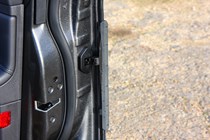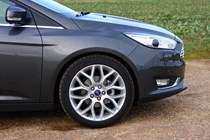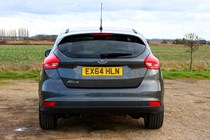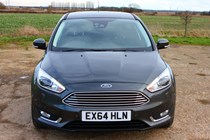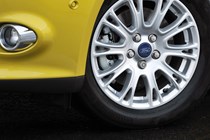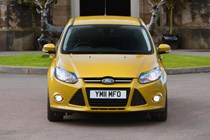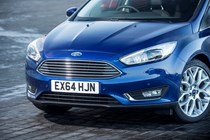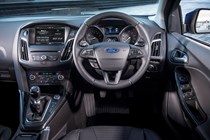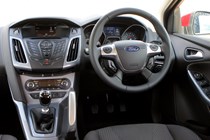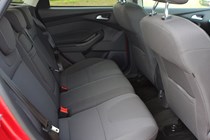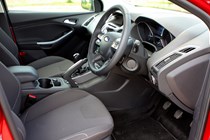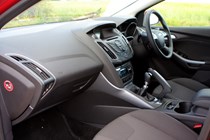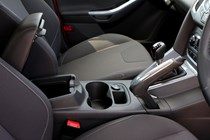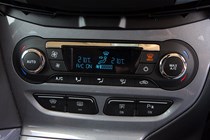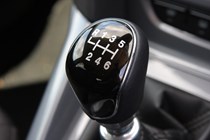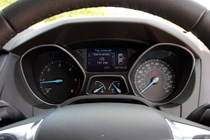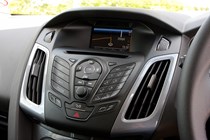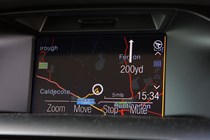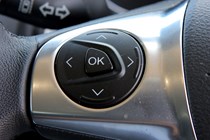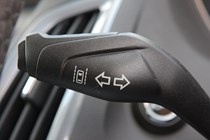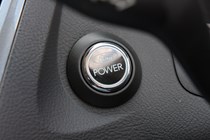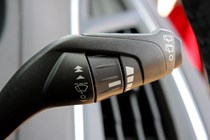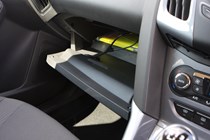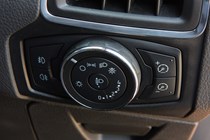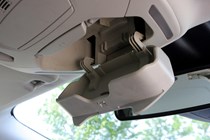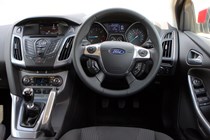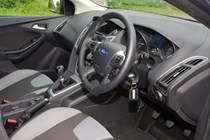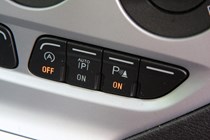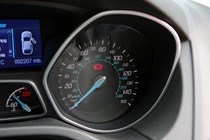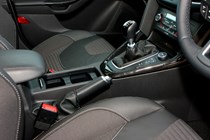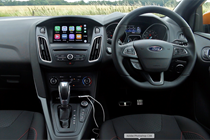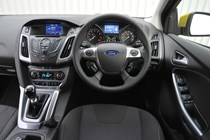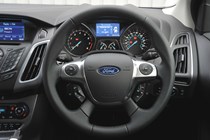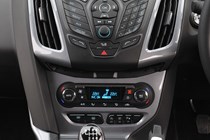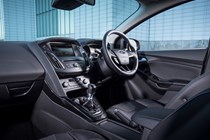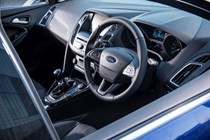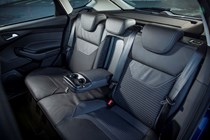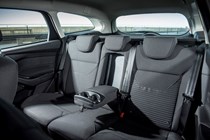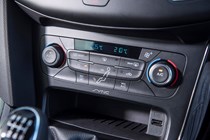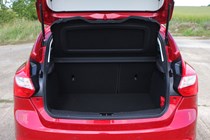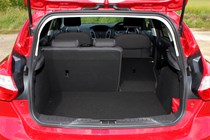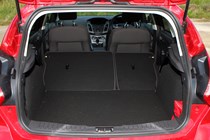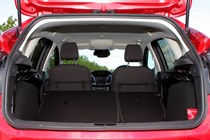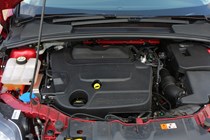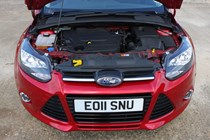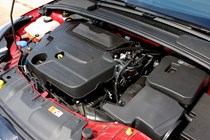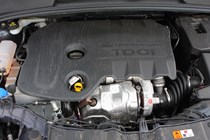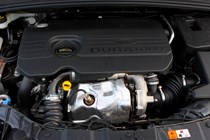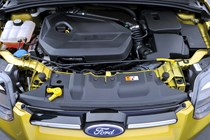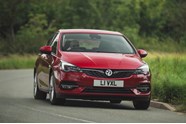Ford Focus Hatchback (2011-2018) review
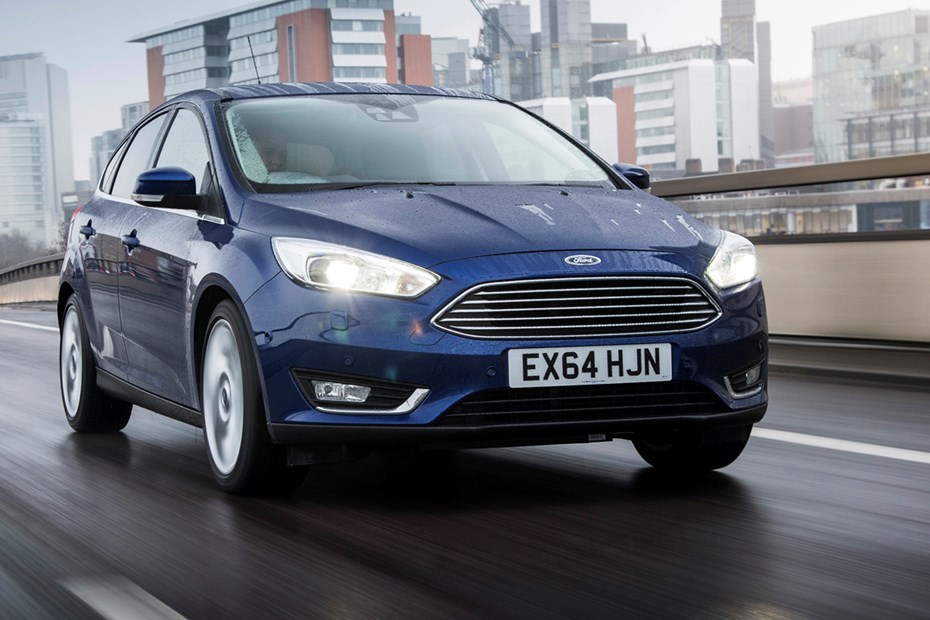
At a glance
| Price new | £13,865 - £39,095 |
|---|---|
| Used prices | £1,093 - £32,190 |
| Road tax cost | £0 - £305 |
| Insurance group | 6 - 43 |
Get an insurance quote with

|
|
| Fuel economy | Not tested to latest standards |
| Range | 404 - 968 miles |
| View full specs for a specific version | |
Available fuel types
Petrol
Diesel
Fully electric
Pros & cons
- Excellent ride and handling
- Broad range of power plants
- Generously equipped
- Search used Ford Focus Mk3 cars for sale
- Counter-intuitive PowerShift gearbox
- Seats lack lateral support
- Rivals are more spacious
Ford Focus Hatchback (11-18) rivals
Overview
As an all-rounder few cars could match the enduring appeal of the Ford Focus Mk3 hatchback. There’s a version for pretty much everyone – from the humble 1.0-litre Ecoboost to the brilliant 2.3-litre RS – and they’re all good to drive. All of this makes it one of the best used cars for less than £5,000.
Whether you’ve a young family and are looking for something inexpensive and safe to run, or you’re after a nimble and engaging hot hatch with a useful degree of practicality, chances are there’s a Focus Mk3 to suit your needs. It’s no surprise it’s so popular on the used market.
Ford Focus Mk3 known faults and common problems
Introduced in the UK in 2011, the third-generation Focus saw Ford really make the grade in terms of quality and dependability. Extremely well made with an expansive model range, the Mk3 Focus continued the reputation of being respected and highly regarded for both fleet and retail owners. Also, like all generations of Focus before it, the Mk3 was – and is – a great steer, making it a real driver’s car.
Despite being priced a notch higher than its predecessor when launched, residuals have weakened following the widespread availability of the fourth-generation Focus on the used car market. Now more affordable and with colossal forecourt choice, the Focus Mk3 is a superb used buy – and that makes it far too good to be considered ‘just’ the default-choice family car.
Buying guide
Common issues, and what to look for if you’re looking at getting one.
1. CREAKING WINDSCREENS
A whisper filtering through the trade regards the bonding of the front screens failing. Listen out for faint crunching or graunching sounds under spirited cornering. Keep your eyes and nostrils open for damp carpets and stale smells. This seems to be affecting cars that have recently had their screen replaced.
2. POWERSHIFT AND AUTOMATIC TRANSMISSIONS
Early cars featured a dry clutch transmission that was superseded by a more robust and reliable wet clutch type. It’s critical to ensure its three-year fluid and filter change to aid longevity and reliability. Powershift is troublesome and best avoided.
3. SUSPENSION
Some cars can demonstrate a creaking front suspension when traversing speed humps or undulating roads. This tends to be nothing more sinister than dry bushes that a keen DIY owner can cure in minutes. A good bargaining point when closing a deal.
4. STEERING CHECKS
When stationary, twirl the steering wheel from one full lock to another a few times and listen for a clonk or twang noise. You may be looking at a broken front coil spring. Not overly expensive to fix but it’s imperative that they are changed as a matching pair.
5. BODYWORK
The Focus features some intricate styling cues that make poor quality repair work really noticeable. Look around all the lamp unit edges and in particular around and inside the filler flap for signs of repair and overspray. Panel and paint quality from new was very good so reject or question anything that doesn’t look right.
6. BRAKES
Generally the Focus braking system is well up to the job in hand, but there are some really poor quality aftermarket parts out there. Look out for juddering front discs and grumbling rear pads. Make sure the road test features some high speed driving to induce the aforementioned problems – and haggle.
7. ELECTRICAL
Some models can show signs of a charging issue. Sit in the car with the interior light on and engine idling. If the interior light seems to pulsate or flicker when you turn on the headlamps or other high current demand items like the heated screen, it’s showing an early sign of the alternator giving up.
8. WHEELS AND TYRES
The Focus can often be misdiagnosed for having a wheel bearing issue. It’s often caused by low quality tyres. If you notice any humming noises below 70mph coming from the back, check the tyre brand or for the inside edge of the rear tyres feeling lumpy or edged.
9. CLUTCH AND GEARBOX
Walk away from vehicles with a stiff gearchange, high biting clutch and/or spongy feeling clutch pedal. Earlier 1.0 cars had quality problems with components causing failure in some cases below 10,000 miles. Also, listen for a rattling noise when switching off indicating a failing dual mass flywheel.
10. ECOBOOST COOLING SYSTEM PROBLEMS
EcoBoost 1.0 models (2011–2013) had a quality issue with a small but important plastic coolant pipe known as the Degas hose that became subject to a dealer service recall. Check it’s been modified because if it splits, especially at speed, it can leak and potentially destroy the engine.
What models and trims can you buy?
Gone from this generation were the slower-selling three-door hatch, the even less popular saloon and the unfancied Coupe-Cabriolet. Instead it was a five-door only offering in hatchback and estate forms, with the Vauxhall Astra, Volkswagen Golf – along with its SEAT Leon and Skoda Octavia siblings – as well as the Honda Civic, Hyundai i30, being its major rivals.
This generation Focus was regularly updated to help maintain its appeal. A significant facelift for the Focus was introduced in 2014 with a new bonnet, front wings, bumpers (the front one incorporating a slender new grille) and slimmer headlamps. At the back, LEDs feature in the reshaped lights and there’s a new tailgate design.
You get a raft of technology to improve driver safety and ownership experience such as a blindspot indicator, self-parking function and autonomous emergency braking. Some of these features are available as options only while others, depending on the trim level you choose, are standard.
Over the next few pages, we’ll review each aspect of the Ford Focus Mk3, taking into account its practicality, comfort, fuel economy and performance. If you’re short on time, you can also skip to our verdict page to see if we recommend the Focus Mk3 as a good used car.



